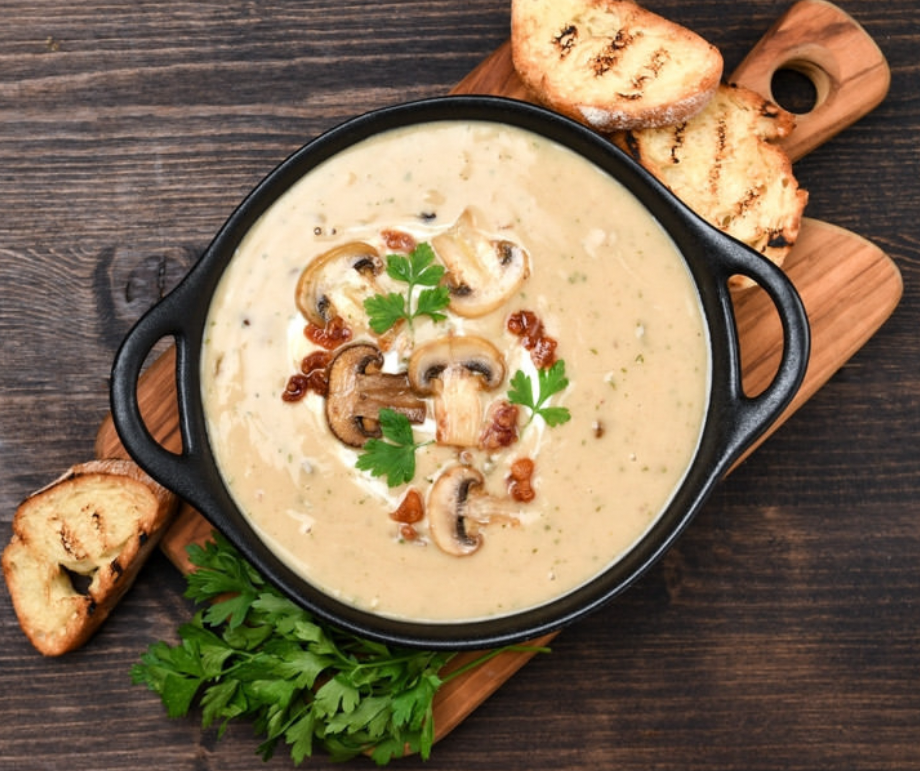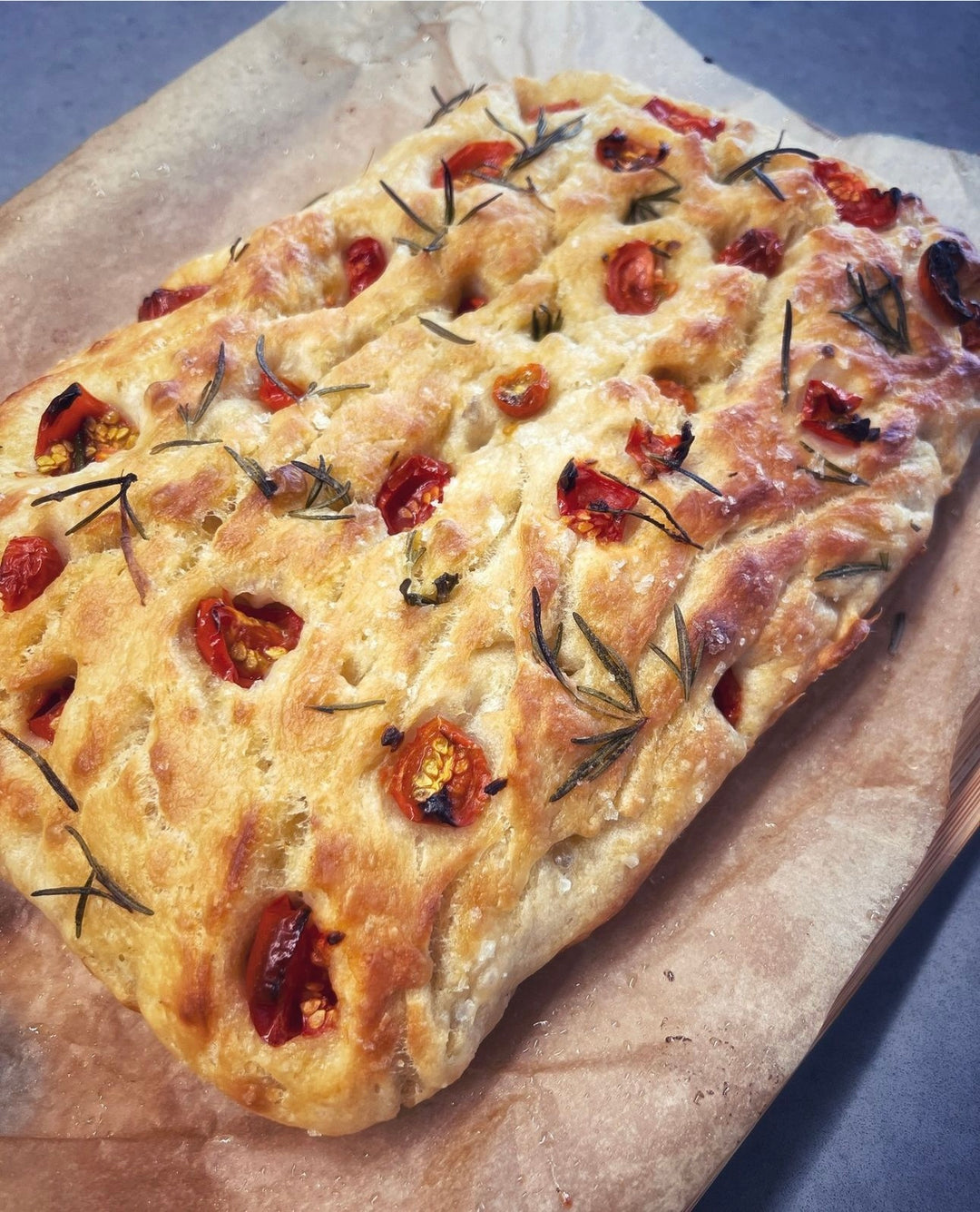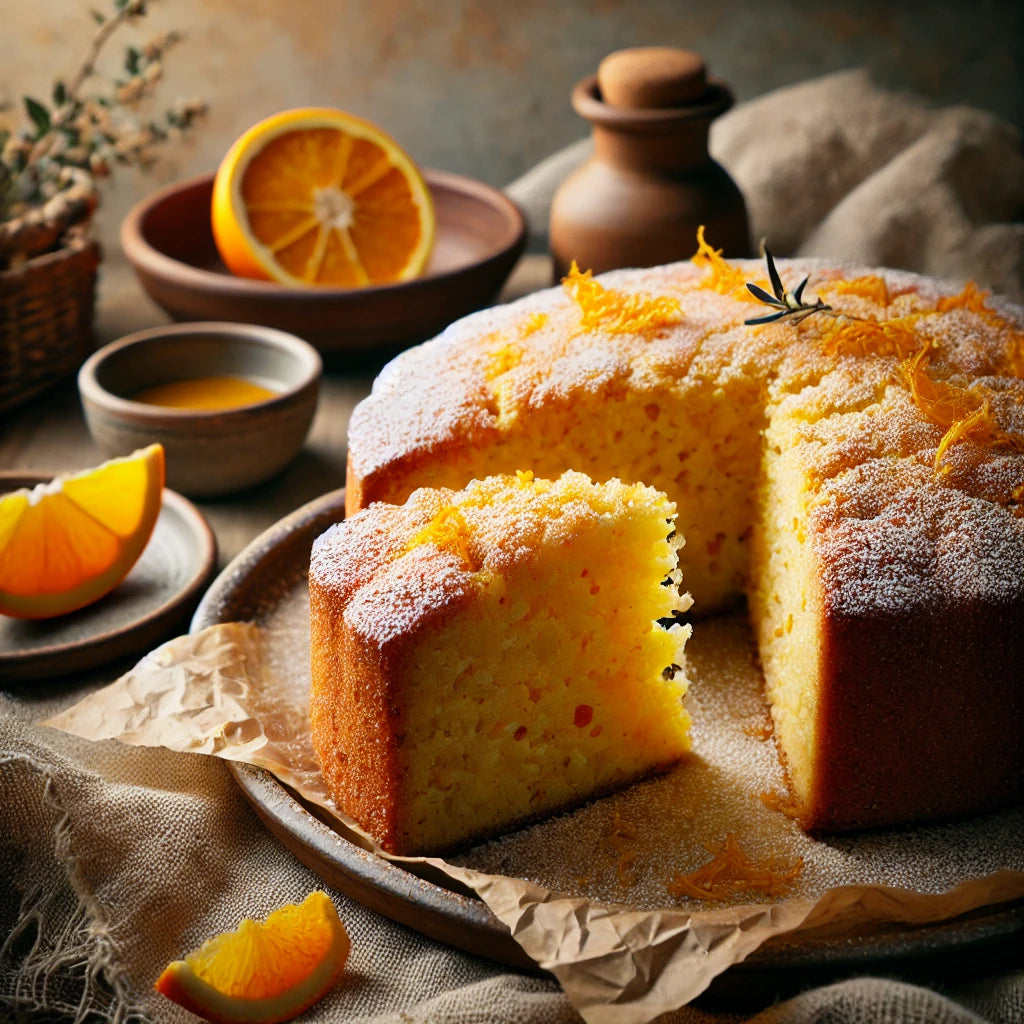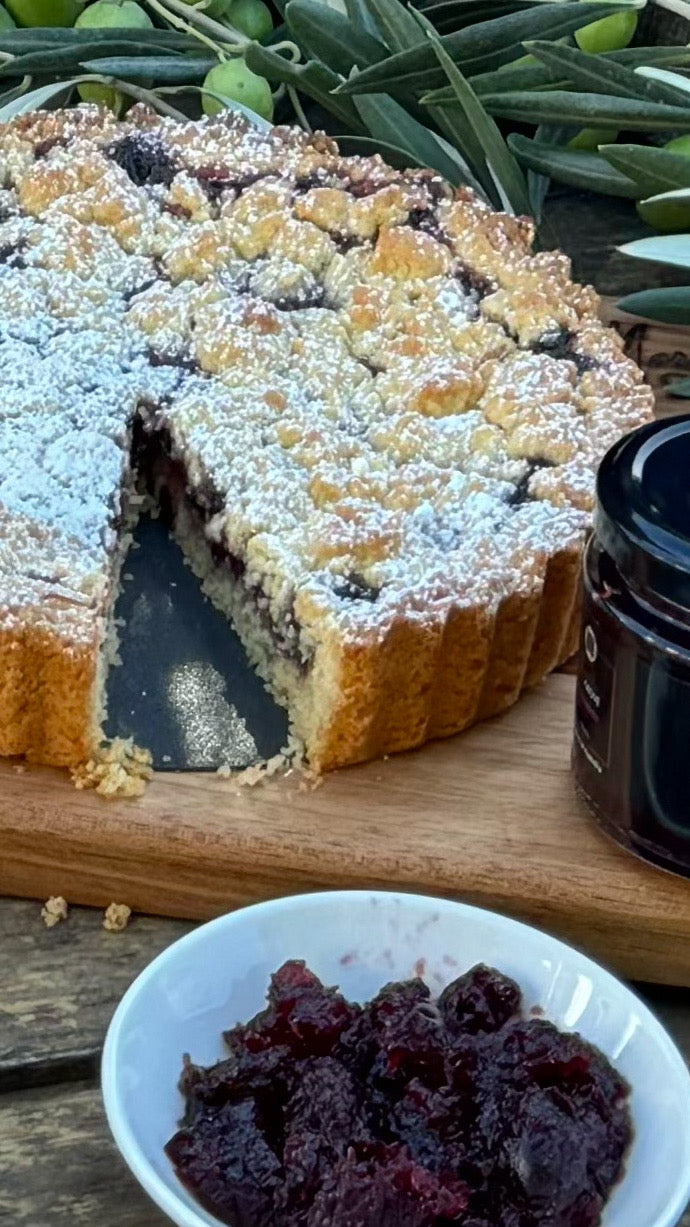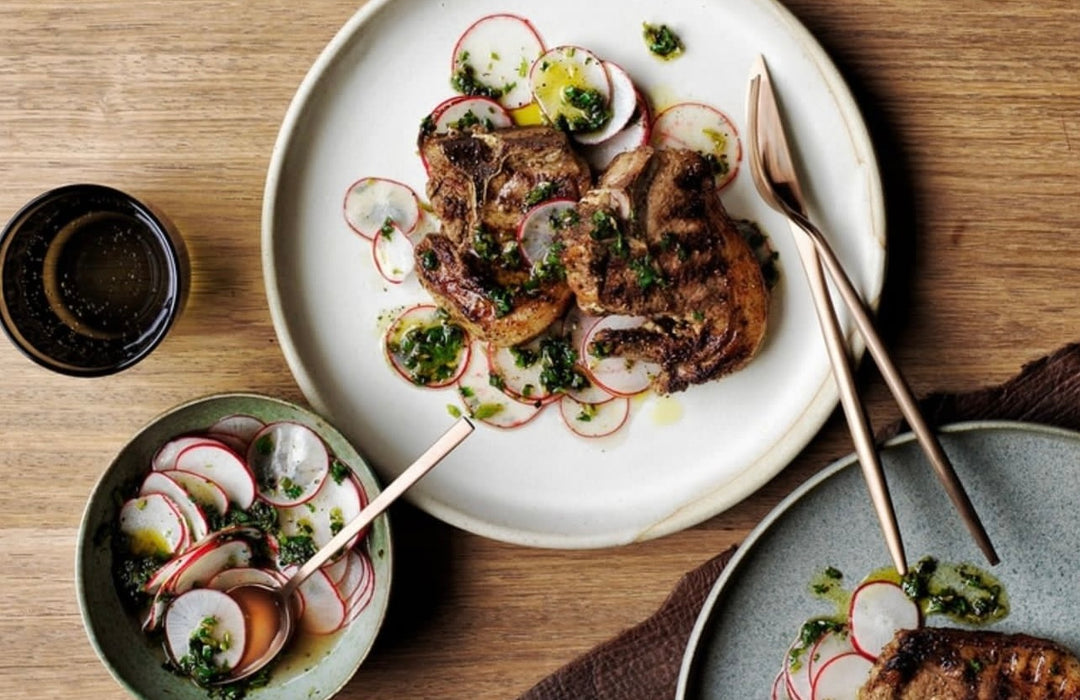For generations, home cooks have wrestled with the supposed evils of cooking with extra virgin olive oil. Throw it in a hot pan, internet wisdom warns, and watch as this liquid gold transforms into a smoke-filled health hazard.
But what if everything you thought you knew about cooking with extra virgin olive oil was wrong?
It's time to separate myth from reality and explore the delicious possibilities this kitchen staple has to offer.
Table Of Contents:
- Dispelling the Myths About Extra Virgin Olive Oil and Heat
- How to Cook with Extra Virgin Olive Oil: Techniques for Every Temperature
- FAQs about cooking with extra virgin olive oil
- Conclusion
Dispelling the Myths About Extra Virgin Olive Oil and Heat

While it’s true that extra virgin olive oil has a lower smoke point than some refined oils like canola oil and peanut oil – between 175-205°C, to be exact – this number alone doesn’t tell the whole story.
Smoke point, as it turns out, is a poor indicator of an oil’s overall stability when heated. This is where oxidative stability comes in.
Oxidative stability refers to how resistant an oil’s fats are to reacting with oxygen when exposed to heat and light. Extra virgin olive oil, with its high levels of antioxidants and monounsaturated fats (which are more heat stable), actually performs incredibly well in extreme conditions.
A 2018 study revealed a surprising truth about common cooking oils. Researchers, comparing the effects of heat on different cooking oils, discovered that oils higher in polyunsaturated fats – like corn oil – produced double the amount of harmful compounds compared to extra virgin olive oil.
This, despite corn oil boasting a considerably higher smoke point.
The culprit? The very thing that makes polyunsaturated fats seem healthy – their chemical structure – makes them significantly less stable when heated.
The Benefits of Cooking With Extra Virgin Olive Oil
Extra virgin olive oil's reputation as a cornerstone of the Mediterranean Diet isn’t unearned. Numerous studies tout the health benefits of cooking with this good oil. Its high concentration of antioxidants may help reduce inflammation and protect against chronic diseases.
Extra virgin olive oil contains oleocanthal, a natural anti-inflammatory that some research suggests could have a protective effect against certain cancers. It’s important to note that research on oleocanthal and cancer is still in its early stages. But the possibility is encouraging, nonetheless.
The Flavour Factor: How Heat Affects Extra Virgin Olive Oil's Taste
Can you cook with extra virgin olive oil without sacrificing flavour? Absolutely. While some volatile flavour compounds evaporate at higher temperatures, most of its distinct character remains stable.
Think of it like using different varieties of tomatoes. You might reach for a sweet cherry tomato in a fresh salad, while a more robust Roma tomato shines in a slow-cooked sauce.
Similarly, a delicate extra virgin olive oil adds nuanced complexity to dressings and dips, but a bolder variety holds its own in a searing hot pan. This makes cooking with extra virgin olive oil a matter of personal preference and selecting an oil suited to the task at hand.
How to Cook with Extra Virgin Olive Oil: Techniques for Every Temperature
Cooking with extra virgin olive oil is simple once you understand its strengths.
For example: extra virgin olive oil makes a wonderful addition to salad dressings and marinades, infusing your food with vibrant flavour. It adds a delicious touch to cooked vegetables, pasta sauces, soups, and stews as a finishing oil.
Extra Virgin Olive Oil at Low Temperatures
Cooking with extra virgin olive oil shines in low-heat applications.
- Dips and Spreads: Elevate your dips by incorporating EVOO. Drizzle it over hummus, baba ghanoush, or guacamole to add a rich, smooth texture and a burst of flavour. EVOO also works beautifully in compound butters or whipped ricotta spreads, where it can be mixed in to create a luxurious finish
- Salad Dressings and Vinaigrettes: One of the simplest yet most effective ways to use EVOO is in salad dressings. Combine Morella Grove’s EVOO with balsamic vinegar, lemon juice, or even just a sprinkle of salt and pepper for a quick, healthy dressing that enhances the natural flavours of fresh greens, grains, or roasted vegetables
- Marinades: Marinating proteins like chicken, fish, or tofu in EVOO helps to tenderize them while infusing them with flavour. The oil acts as a carrier for other marinade ingredients like herbs, spices, garlic, and citrus, ensuring even distribution and deeper flavour penetration without the need for high heat
- Finishing Oil: Use EVOO as a finishing touch to enrich the flavour of your dishes. Drizzle it over soups, stews, pasta, or even pizza just before serving. The fresh, vibrant taste of cold-pressed olive oil can elevate the entire dish, adding a layer of complexity that cooked oils often cannot provide
- Cold Dishes: For dishes that require no cooking at all, such as gazpacho, ceviche, or chilled pasta salads, EVOO can be the star ingredient. Its full-bodied flavour complements the fresh, raw ingredients in these dishes, making them more satisfying and nutritious
Extra Virgin Olive Oil at Medium Temperatures
Don’t be afraid to introduce extra virgin olive oil to your pan while sauteing or baking. Cooking with extra virgin olive oil at medium temperatures is where its versatility and rich flavour truly shine.
From a simple pan of roasted vegetables to a perfectly seared piece of fish, embrace the versatility this good oil offers. There's a reason it's one of the most popular olive oils.
- Sautéing and Stir-Frying: EVOO is perfect for sautéing vegetables, garlic, or onions, where it can gently coax out flavours without overwhelming the dish. The moderate heat allows the oil to maintain its healthful properties while imparting a light, fruity aroma to your sautéed creations. Try it with a medley of vegetables, and you'll notice how it enhances each ingredient’s natural flavour
- Roasting: When roasting vegetables, chicken, or even potatoes, EVOO is a game-changer. Its robust flavour holds up well in the oven, especially at medium temperatures around 175-205°C. The oil helps to create a beautiful, crispy exterior while keeping the inside tender and moist. Additionally, the antioxidants and polyphenols in EVOO are stable enough to withstand these temperatures, meaning your roasted dishes retain not only their taste but also their nutritional benefits
- Baking: EVOO isn't just for savoury dishes; it’s also an excellent substitute for butter in baking. Use it in cakes, muffins, or even bread to add moisture and a subtle richness. Its natural fats contribute to a tender crumb and a flavourful finish, especially in recipes that call for ingredients like citrus, nuts, or herbs, which pair beautifully with the oil's fruity notes
- Pan-Frying: While pan-frying often calls for oils with a higher smoke point, EVOO can still be a fantastic option when used correctly. For dishes that require moderate heat, such as searing a piece of fish or browning chicken, EVOO not only adds flavour but also ensures a golden, crispy crust. Its high content of monounsaturated fats and antioxidants means it won’t break down as quickly as other oils, making it a healthier choice even in moderate frying
- Glazing and Deglazing: Use EVOO for glazing meats or vegetables toward the end of cooking to give them a glossy, flavourful finish. It’s also ideal for deglazing pans after sautéing meat or vegetables, where it can lift the browned bits and create a rich, flavourful base for sauces
Extra Virgin Olive Oil at High Temperatures
Many cooks believe high heat is off-limits for cooking with extra virgin olive oil. But the truth, as the research shows, tells a different story.
While some cooks avoid cooking with extra virgin olive oil at higher temperatures due to potential flavour changes, others embrace its unique properties.
One example? When a dish calls for a short cooking time – think a quick sear or stir-fry – a good-quality extra virgin olive oil can impart a wonderful depth of flavour.
- Oxidative Stability: One of the key reasons EVOO can be used at higher temperatures is its oxidative stability. Unlike oils high in polyunsaturated fats, which break down quickly and produce harmful compounds when heated, EVOO is rich in monounsaturated fats and antioxidants, particularly polyphenols, which protect the oil from oxidative damage. This means that even when heated to high temperatures, EVOO remains stable and continues to provide health benefits
- High-Temperature Cooking: For cooking methods that require high heat, such as stir-frying, searing, or even grilling, EVOO is an excellent choice. Its unique flavour profile can enhance the taste of meats, vegetables, and even certain baked goods, adding a depth that other oils lack. When a quick, intense heat is needed, EVOO's robustness shines, creating a caramelised exterior on meats while keeping the inside juicy
- Flavour Dynamics: While it's true that 'some' of EVOO’s more delicate flavour notes may diminish at high temperatures, the oil's overall complexity remains intact, offering a rich, slightly nutty, and peppery finish that complements a wide range of dishes. For example, when searing a steak or frying an egg, EVOO can impart a distinctive taste that elevates the dish beyond what you might achieve with a neutral oil
- Deep Frying: While deep frying is traditionally reserved for oils with very high smoke points, EVOO can still be used effectively for frying when done correctly. Research has shown that even after multiple rounds of frying, EVOO retains its quality and doesn’t produce harmful trans fats to the extent that many other oils do. Its rich flavour can add a gourmet twist to fried foods like tempura vegetables or crispy potatoes
- Practical Tips: When using EVOO at high temperatures, it’s important to choose a high-quality product, such as Morella Grove’s Extra Virgin Olive Oil, which is less likely to degrade quickly. Ensure your oil is fresh, as older oil is more susceptible to breaking down under heat. Additionally, consider finishing your high-heat dishes with a fresh drizzle of EVOO to reinforce its flavour and nutritional benefits
Extra Virgin Olive Oil Deep-Frying Tips

For deep frying, experts generally recommend other oils, like avocado oil or those with a more neutral taste, like grapeseed oil. However studies have shown some positive results using extra virgin olive oil, even in these cases.
One study that looked at the effects of heating extra virgin olive oil eight times found a negligible change in trans-fat content – rising only from 0.045% to 0.082% after repeated use.
Although you might not always deep fry with it, don’t be afraid to try it sometime – you might love the outcome.
| Factor | Extra Virgin Olive Oil (EVOO) | Olive Oil | Canola Oil | Coconut Oil | Avocado Oil | Vegetable Oil (e.g., Soybean) |
|---|---|---|---|---|---|---|
| Smoke Point | 374-405°F (190-207°C) | 390-468°F (199-242°C) | 400°F (204°C) | 350°F (177°C) | 520°F (271°C) | 400-450°F (204-232°C) |
| Primary Fat | Monounsaturated (Oleic Acid) | Monounsaturated (Oleic Acid) | Monounsaturated (Oleic Acid) | Saturated Fatty Acids | Monounsaturated (Oleic Acid) | Polyunsaturated Fatty Acids |
| Oxidative Stability | High (due to antioxidants and monounsaturated fats) | Moderate to High | Moderate | Moderate (due to saturated fats) | High (due to monounsaturated fats) | Low (due to high polyunsaturated fats) |
| Nutritional Profile | High in antioxidants, polyphenols, and vitamins E and K | Lower in polyphenols than EVOO, but still contains some antioxidants and vitamins | Low in polyphenols, contains Omega-3 and Omega-6 | Low in nutrients, some lauric acid | High in Vitamin E, lutein, and carotenoids | Low in nutrients, often highly processed |
| Flavor | Fruity, Peppery, Rich | Mild, less fruity than EVOO | Neutral | Sweet, Tropical | Mild, Buttery | Neutral, Bland |
| Suitability for Frying | Good for pan-frying; moderate for deep frying | Good for frying, especially at higher temperatures | Good | Poor (smoke point too low for deep frying) | Excellent for deep frying | Good for deep frying |
| Health Benefits | Anti-inflammatory, heart health, may reduce risk of chronic diseases | Heart health, but fewer antioxidants than EVOO | May reduce cholesterol, contains Omega-3s | May boost metabolism, antimicrobial properties | Heart health, improves cholesterol levels | Can increase inflammation if high in Omega-6 |
| Shelf Life | 18-24 months (best when fresh) | 18-24 months | 6-12 months | 24 months | 12-18 months | 6-12 months |
So, what’s the final verdict?
It turns out that you absolutely can use extra virgin olive oil for all your cooking needs. It’s generally considered safe for most cooking needs. Not only is it safe for cooking, but with all of its beneficial characteristics, it's perhaps one of the healthiest cooking oils available.
Practical Storage and Usage Tips
To get the most out of your Morella Grove Extra Virgin Olive Oil, proper storage and mindful usage are key.
-
Storage: Keep your EVOO in a cool, dark place, away from direct sunlight and heat. Exposure to light and heat can degrade the oil, leading to a loss of flavour and nutritional benefits. A pantry or a cabinet far from the stove is ideal
-
Shelf Life: EVOO is best used fresh, so aim to consume it within six months of opening, although it can last up to 12-18 months if stored properly.
-
Usage: Before using your EVOO, give it a sniff or a taste to ensure it’s still good. Fresh EVOO should have a pleasantly fruity, leafy aroma. If it smells a bi rancid or tastes bitter, it may be past its prime
FAQs about cooking with extra virgin olive oil
Can I use extra virgin olive oil for cooking?
The short answer is, yes. As confirmed in the content above, it's safe, and with its flavour and other properties, probably the healthiest option.
Can you pan-fry with extra virgin olive oil?
Yes, but there's an important caveat. Many cooks are divided over whether you should, due to personal preference with flavour, particularly when exposed to higher temperatures. The bottom line? For everyday pan-frying, go for it and enjoy.
Do chefs cook with extra virgin olive oil?
Yes, but use varies between chefs based on their cooking style and the intended taste profile. Extra virgin olive oil’s unique character is often embraced as a way to add depth and complexity to a dish.
Can you cook extra virgin olive oil on high heat?
The verdict's in - you certainly can, but for some readers, the flavour changes that may occur might be something to consider, which you can read about above.
Conclusion
Cooking with extra virgin olive oil opens up a world of possibilities in the kitchen. It's a versatile ingredient capable of enhancing both flavour and nutrition. So go ahead, crank up the heat and embrace the full potential of this culinary treasure. Whether it’s a delicate drizzle or a generous pour, make cooking with extra virgin olive oil a joyful part of your culinary repertoire.



